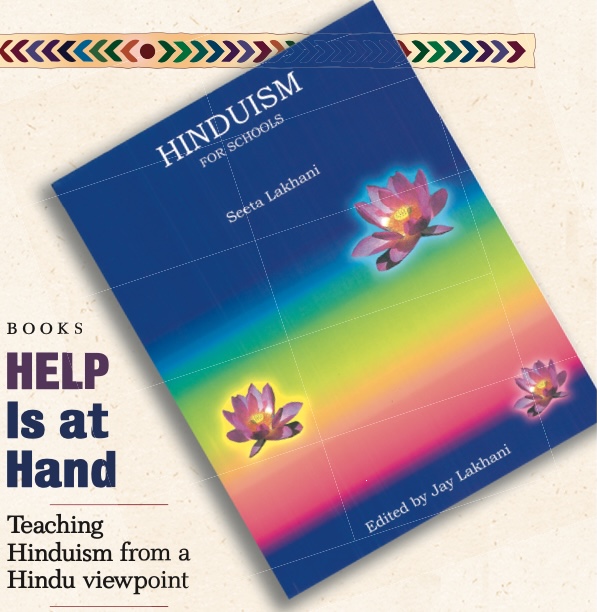Too many Hindu moms and dads have long suffered trying to unravel the tangle of Hindu misconceptions their children often bring home from school. “Why do we pray to idols in the temple?” these innocent young ones ask their parents in confusion. “Are we really superstitious? Why do we worship so many Gods and Goddesses? What is the caste system and why does it exist? Why have Hindu wives committed suicide by throwing themselves on their husband’s funeral pyre? And does Goddess Kali really kill people and drink blood?”
Hinduism as it is taught in public school systems outside India has always been distorted to one extent or another by errant Abrahamic interpretation. The book, Hinduism for Schools (133 pages, Vivekananda Centre London Ltd. us$19.10), written by Seeta Lakhani and edited by her father, Jay, addresses these misrepresentations with intelligent clarity. Although specifically crafted for the Western classroom, their book has something for everyone. First and foremost, of course, it provides a correct overview of the worlds most ancient faith. Aside from this, it is beautifully designed and features great art. In the interest of full disclosure, Hinduism Today provided most of the artwork. The whole package is truly inspiring.
The author wisely chooses to amplify only a select few of Hinduism’s frequently misunderstood attributes. Her approach is positive. She extols Hindus for their tolerance of other religions and explains why they are this way. She shows how the various Hindu theologies are highly advanced and synchronized with modern scientific thought. And she reveals the deep mysticism of Hinduism in its teaching that the soul of man is God in essence.
Seeta takes issue with the fact that Hinduism is too often presented as a history lesson with no relevance to modern times. “Hinduism prides itself on being a living religion, ” she writes. “It is constantly evolving and refreshing its message of spirituality through contemporary spiritual giants.” First among the giants that she is referring to are Swami Vivekananda and his preceptor Sri Ramakrishna, to whom the book is dedicated.
Hinduism for Schools comes with a series of textbooks stocked with information to prepare students for the tests of the General Certificate of Secondary Education (GCSE). These GCSE tests are given to assess student attainment at the end of the period of compulsory secondary education (age 14) in the United Kingdom.
Hinduism for Schools, by Seeta Lakhani, Vivekananda Centre London Ltd. 6 Lea Gardens, Wembley, Middlesex HA9 7SE, web: http://www.vivekananda.btinternet.co.uk [http://www.vivekananda.btinternet.co.uk]
